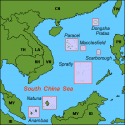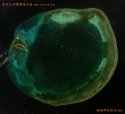China built Helicopter base for ASW in Duncan island
Satellite images show dredging and land filling by China at two new sites in the South China Sea, both in the Amphitrite group of the Paracel Islands, approximately 15 kilometers north-northwest of China’s military base at Woody (Yongxing) Island.
Also newly visible is a helicopter base under construction at Duncan Island, another site in the Paracels, suggesting that Beijing may develop a network of bases in the South China Sea to support anti-submarine warfare helicopters, such as its recently deployed ASW Z-18F.
The most recent dredging, which began sometime after December 2, 2015, is creating new terrain on the reef adjacent to North Island, held by the PRC since 1950. 5.5 kilometers northwest of North Island, at China-occupied Tree Island, a cutter suction dredger can be seen expanding a port area and piping sediment onto a new area of land fill. A series of satellite images indicates that the dredging at Tree Island began sometime after October 18, 2015.
North Island and Tree Island are both part of wide and shallow reef complexes extending for more than eight kilometers each, and they offer much larger surface areas for exploitation than those available at Woody Island, China’s main installation in the Paracels and the location of China’s first airport in the South China Sea (called the East Sea by Vietnam and the West Philippine Sea by the Philippines).
Woody Island, which hosts two harbors, numerous radomes, and many new buildings adjacent to an airfield that was significantly expanded in 2014-2015, is crowded and small compared to the installations, including runways, being built by China at Subi and Mischief reefs in the Spratlys, where continuous stretches of curved and straight reef 10 and 14 kilometers long, respectively, have been buried under sand. And China’s new base under construction at Fiery Cross Reef, though only roughly the size of Woody (three square kilometers), already appears to be more sophisticated; extensive structures, likely to serve as water capture reservoirs and fuel bunkers, have been dug into the coral substrate at Fiery Cross and covered with a protective layer of sand, as seen in imagery from January 8, 2016.













